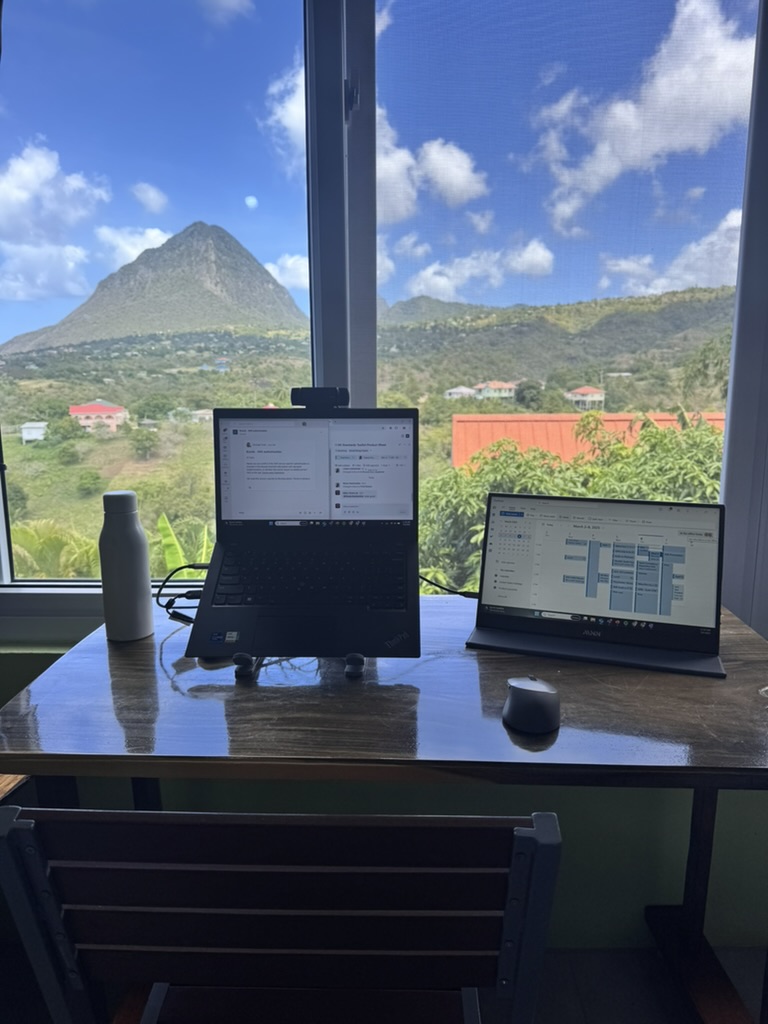10 Essential Tips for Balancing Work and Travel as a Digital Nomad
Living the digital nomad lifestyle is often portrayed as the ultimate freedom—laptops by the beach, exploring new cities on your lunch break, sipping espresso in a quaint café somewhere in Europe. And yes, that can be your reality. But behind the wanderlust-fueled Instagram posts is a daily balancing act between productivity and adventure.
Balancing work and travel requires more than just a strong Wi-Fi connection. It takes intention, boundaries, and a bit of trial and error. Whether you’re just starting your nomadic journey or looking to refine your rhythm, here are 10 essential tips to help you thrive as a digital nomad.

1. Prioritize Strong Wi-Fi (It’s Non-Negotiable)
Let’s be real: your entire work life hinges on a stable internet connection. Before you book that charming mountain retreat or dreamy beachfront villa, dig into the reviews for internet quality—especially if you have video calls or need to upload large files.
💡 Pro tip: Carry a portable Wi-Fi hotspot or a local SIM card with data. Apps like Speedtest can help you verify the connection before committing to a long stay.
2. Create a Flexible (But Structured) Routine
One of the best parts of being a digital nomad is flexibility—but ironically, too much freedom can lead to burnout or procrastination. The key? Building a routine that respects both your work and your desire to explore.
Try setting core “office hours” that match your clients’ or company’s time zone, and then block off windows for personal time, local experiences, or movement.
🎯 Example: Work 8 AM–2 PM, then spend your afternoons exploring, hitting a museum, or lounging on the beach.
3. Master the Art of Time Zone Juggling
Working while hopping across time zones? You’ll quickly learn that time math is not for the faint of heart.
Use tools like World Time Buddy, Google Calendar with multiple time zones, or even time zone widgets on your phone or laptop to keep things straight. And always confirm meeting times in both your and your counterpart’s time zone.
Also consider timezones when you’re picking where to visit. Central America, South America and the Caribbean will only have a few hours difference which minimizes the change, while Asia and Oceania could be 14 hours.
I spent 5 weeks working remotely from Australia and it was tough. I was often taking meetings at 2am BUT it also meant I finished my day around lunch. This gave my lots of time explore while the sun was up.
🕒 Pro-tip: A Time Zone Converter is a lifesaver.
4. Prioritize a Comfortable Work Environment
One of the most overlooked parts of working while traveling? Your workspace setup. Sure, you can technically get work done from a couch, a kitchen stool, or even a bed—but try doing that for 8 hours and your body will revolt.
When I book hotels or Airbnbs, my #1 criteria (after Wi-Fi) is the desk and chair. Desks are usually easy to find—even a kitchen table will do in a pinch. But the chair? That’s the real game-changer.
Look for a chair with actual back support and some kind of cushion. Sitting on a hard wooden chair for an entire workday is like working on a Spirit Airlines flight… functional, but painfully uncomfortable. And if you’re constantly shifting around or your back’s aching, it’s nearly impossible to get in the zone.
🪑 Pro tip: If you arrive somewhere and the chair is awful, improvise. Stack pillows, borrow a better chair from another room, or even head to a coworking space for a few days.
A comfortable setup isn’t just about luxury—it’s about focus, productivity, and keeping your body healthy while you travel.
5. Pick the Right Destinations for Remote Work
Not every beautiful location is remote work–friendly. Do some homework and choose cities with solid infrastructure, safety, reliable internet, and coworking culture.
🌎 Top picks:
• Lisbon – Sunny, walkable, with tons of nomads
• Medellín – Great cost of living and digital nomad scene
• Chiang Mai – Affordable, welcoming, and full of remote workers
• Mexico City – Buzzing with coworking spots and amazing food
Avoid remote villages or islands unless you’ve double-checked the Wi-Fi and time zone compatibility. Note: Wi-Fi is becoming so reliable these days that I rarely have issues and if I do, it’s in places I wouldn’t expect.

6. Invest in Travel-Ready Work Gear
Your tech setup is your office—make sure it’s lightweight, durable, and efficient. You don’t need to bring your entire desk setup, but a few thoughtful items go a long way:
🔧 Essentials to pack:
• Lightweight laptop
• Noise-canceling headphone
• Portable charger/power bank
• Universal adapter
• Laptop stand – this has made working from odd places so much more comfortable
•Wireless mouse and keyboard
Bonus: Consider a portable second screen like a SideTrak or Duet Display for multitasking.
7. Avoid Working on Travel Days
This one’s simple: travel days are not productive work days. Delays happen, buses run late, and let’s be honest—you’ll be too drained to do quality work.
Whenever you’re changing locations, block out that day as non-working time if possible. Arrive, settle in, test the Wi-Fi, get groceries or essentials, and then resume work.
The only time I break this rule is when I’m taking easy transportation, such as trains in Europe. They’re reliable and if you miss one train there’s likely another in 30 minutes.
✈️ Pro tip: Travel on weekends or schedule arrival a full day before your next meeting or deadline.

8. Build in Breaks (and Don’t Feel Guilty)
When you’re in a beautiful new place, it’s easy to fall into “I should be working” guilt. Or worse, “I should be exploring more” guilt. You need time to do neither.
💆♀️ Build in intentional, unplugged breaks. Take a long lunch, go for a walk, meditate, journal, or simply relax without checking Slack or email. Your brain needs time to recharge—especially when you’re processing new environments daily.
9. Find Community While You Work
Solo travel can get lonely—and it’s easy to feel disconnected when you’re always on the move. That’s why community matters.
Tap into coworking spaces, local digital nomad groups on Facebook or Meetup, or try coliving spaces like Selina, Outsite, or Remote Year. You’ll make friends, get recommendations, and maybe even find collaborators.
🤝 Remember: It’s not just about where you are—it’s about who you connect with.
10. Embrace the Slow Travel Mindset
The biggest lesson I’ve learned? Fast travel is exhausting. Sure, it’s fun to jump from city to city every few days—but it’s also mentally draining and terrible for work-life balance.
I try to stay at least one week in a destination. This gives you time to settle into a routine, find your favorite café, learn the local rhythm, and truly experience the place—not just tick it off a list. This can be impacted if you can take a quick train to another city, which is mostly only possible in Europe.
🏠 You’re not just a tourist—you’re building a lifestyle.
Final Thoughts
Balancing work and travel isn’t about chasing the perfect destination—it’s about designing a life that allows both your career and your curiosity to thrive.
Start small, experiment, and most importantly: give yourself grace. Not every day will be perfect, and that’s okay. The digital nomad journey is a work in progress—but it’s worth every step.
Are you planning to go remote? Or already on the road?
👉 Drop your favorite destination to work from in the comments!

Nice share!